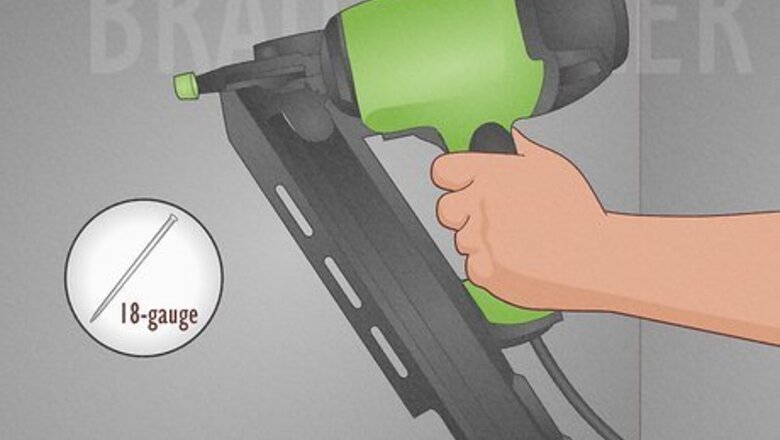
views
- Brad nailers use 18-gauge nails that are perfect for small, intricate projects like installing stop moldings and building a birdhouse.
- Finish nailers can use 15- or 16-gauge nails and have enough power to build and install cabinets and flooring.
- Choose a brad nailer if your project is decorative or uses thin wood, and opt for a finish nailer for heavy-duty projects that need extra security.
What is a brad nailer?
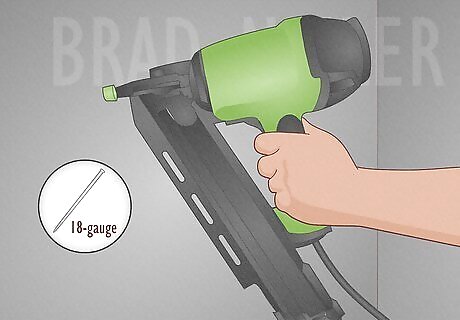
Brad nailers are lightweight nail guns that use smaller, 18-gauge nails. This small but mighty power tool can be cordless or pneumatic. They’re mostly used for finer wood projects and detailing because the nails stay hidden under the surface. A brad nailer’s compact design makes them perfect for hard to reach places and thinner woods. A brad nail gun is great to use on material ⁄2 in (1.3 cm) thick or less, as smaller nails are less likely to split wood. This tool can be used in place of glue to temporarily hold wood together or with glue to provide a longer-lasting hold. It’s unlikely that a brad nailer will split wood, thanks to the smaller nails.
What is a finish nailer?
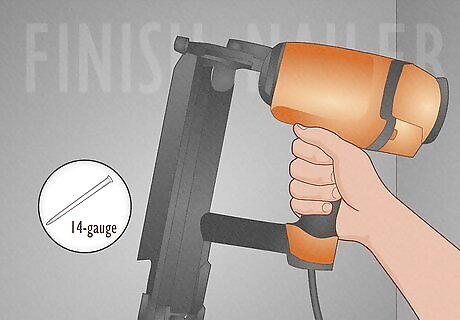
Finish nailers are high-powered nail guns that use larger, 14-, 15-, and 16-gauge nails. This powerful tool is most commonly used to “finish” projects and secure heavy and thicker woods in place. A finish nailer typically uses 14-, 15-, or 16-gauge nails, depending on the model’s specificities. Make sure you know what nail size you’ll need before you start your project, as a finish nailer can only use the nail size it’s made for. This tool can leave behind larger holes, thanks to the nail’s large size. A wood-filling glue may be needed to patch certain projects. There’s a greater chance that a finish nailer will split wood due to the larger nails.
Differences
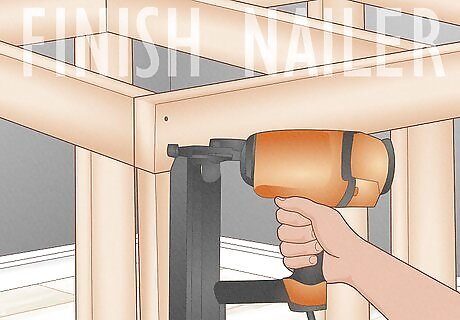
Finish nailers can drive through thicker materials than brad nailers. These nail guns are specifically designed for heavy-duty jobs with their wider finisher nails. While, on the other hand, brad nailers need to use thinner brad nails. Slim nails don’t have the power to push through thick wood, which is why a finish nail is used to connect durable pieces of wood. Think of it this way: if your project could potentially be put together with glue, use a brad nailer.

Brad nailers are lighter, more portable, and easier to use than finish nailers. Thanks to their lightweight and compact size, brad nailers are easy to maneuver and don’t require a lot of force. On the other hand, finish nailers are bulkier, heavier, and require a good amount of strength to operate.
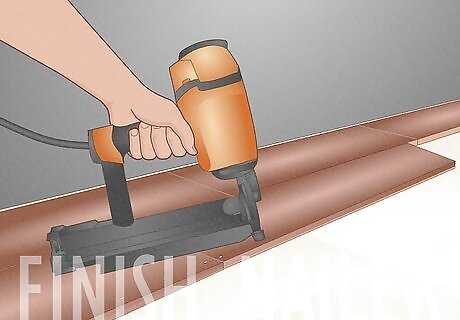
Finish nailers can be used on a wide range of materials. Unlike brad nailers, finish nailers can put nails in more than MDF and plywood. This tool's heavy-duty power helps it easily pierce through hardwood floors, cabinetry, and outdoor molding.
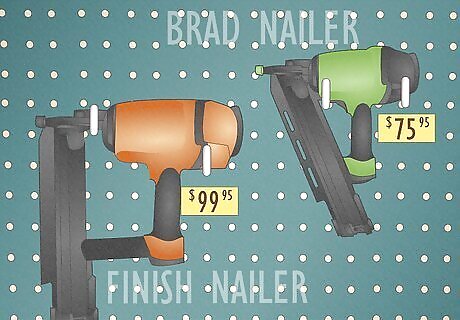
Brad nailers are cheaper than finish nailers. Although both nail guns have similar uses, their differences in weight and power truly show in the price tag. Brad nailers are typically 10 to 20% less than finish nailers. Brad nails also tend to be cheaper than finish nails, no matter the gauge.
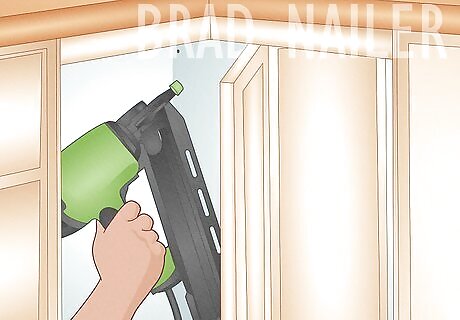
Brad nailers work better in confined spaces. Finish nailers are larger than brad nailers, so they’re harder to operate in tight corners or small spaces. If your project requires getting into tricky spaces and the wood’s thin, stick with a brad nailer.
Which nailer do I use for my project?
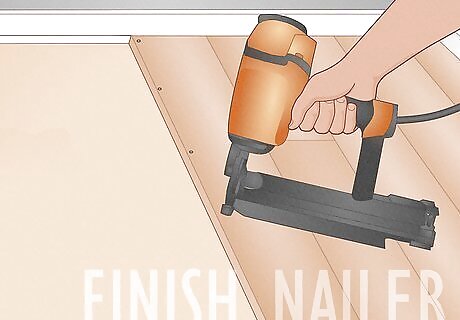
Use a finish nailer to install wood flooring. Thanks to its power, a finish nailer can secure hardwood to the floor. Just keep in mind that wood glue may need to be used to patch large nail holes. The gauge of your finish nails will depend on the type of flooring you’re using, as thicker gauge nails could split thinner materials.
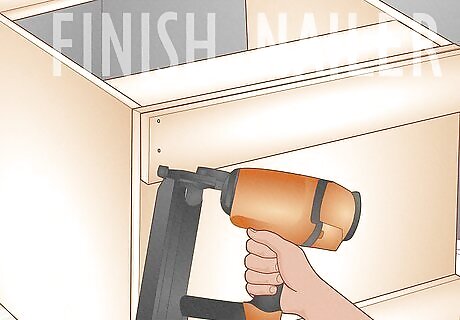
Opt for a finish nailer for building and installing cabinets. Cabinet wood is often thick and sturdy, and force is needed to break through it. Because of this, a finish nail gun is perfect for the job. Plus, the ranges in finish nail gauges give you options when choosing which size nail to use.
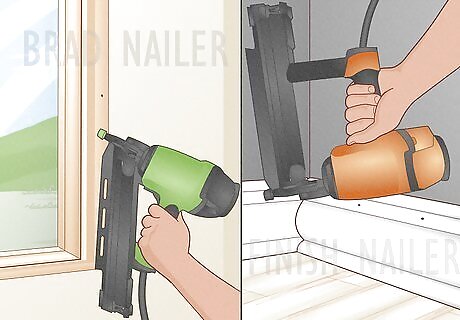
Try a brad or finish nailer for attaching baseboards, crown molding, and trims. What type of nail gun you use depends on how thick your wood is and if it’s in a hard-to-reach place. For example, take a look at what type of nailer works best for these projects: Installing baseboards: 15-gauge finish nailer Crown molding: 15-gauge finish nailer Window casing: brad nailer Stop moldings: brad nailer Interior trim: 16-gauge finish nailer
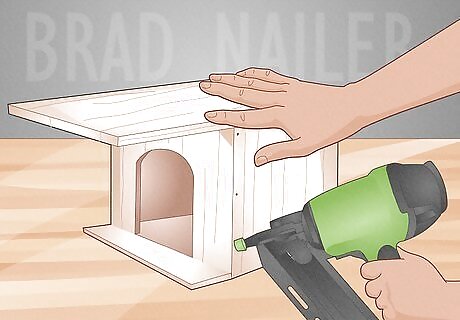
Use brad nailers for delicate projects like birdhouses and flower beds. The nail gun’s compact design and thin nails make it the best tool for making a birdhouse or building a wooden plant box. Pair your use of a braid nailer with some glue, and your small carpentry project will be good to go. You could also build: Decorative crates or boxes Pet beds Doll houses




















Comments
0 comment